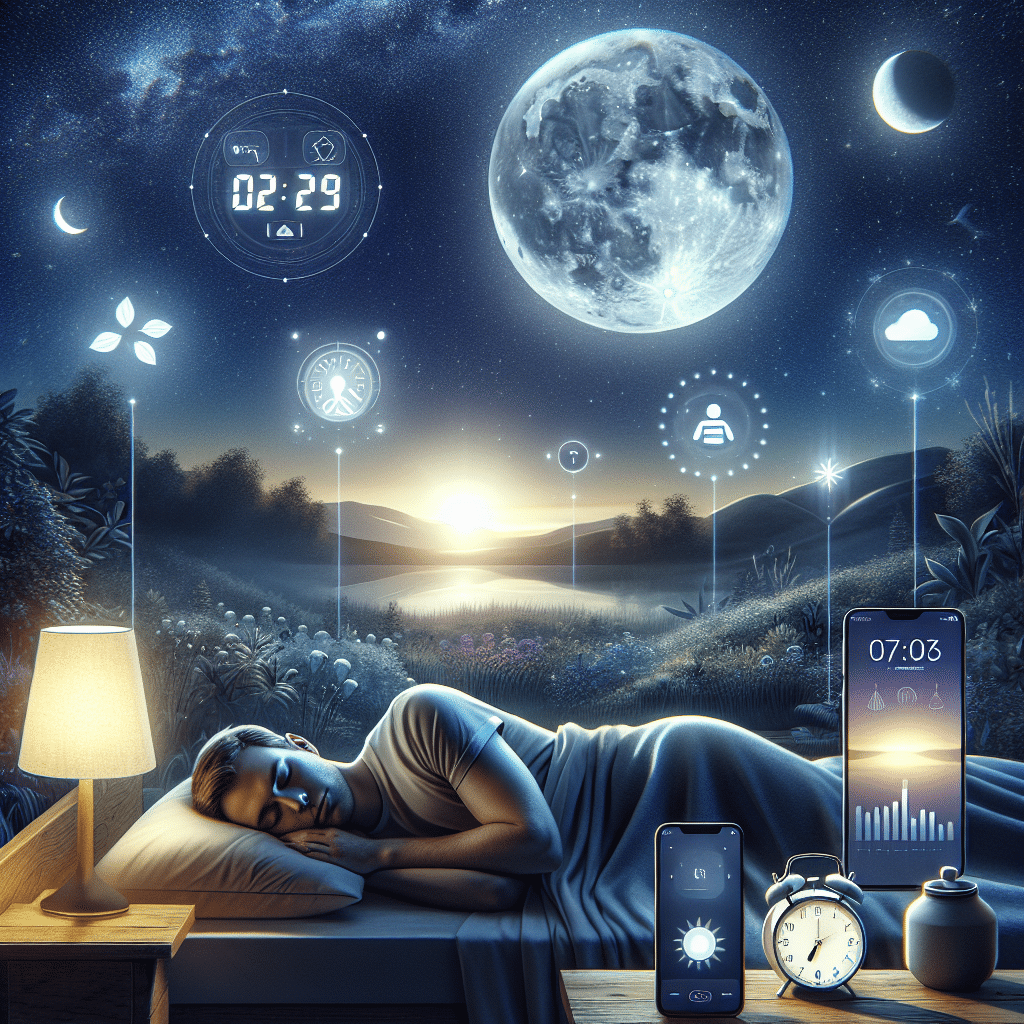Understanding Sleep Cycles
Sleep is a vital component of human health, involving multiple cycles that biologically rejuvenate the body and mind. While traditional practices focus on sleep hygiene, technology now plays a transformative role in promoting healthy sleep cycles. Understanding how technology can aid in establishing effective sleep patterns can significantly enhance overall wellness.
Sleep Cycle Overview
Each sleep cycle consists of distinct stages: light sleep, deep sleep, and REM (Rapid Eye Movement) sleep. The complete cycle lasts about 90 minutes and is typically repeated four to six times during a night’s rest. Disruptions in these cycles can lead to sleep disorders, negatively impacting physical and mental health.
Wearable Sleep Technology
Wearable devices, like smartwatches and fitness trackers, are revolutionizing our approach to sleep. These gadgets utilize sensors to monitor various parameters, including heart rate, respiratory patterns, and movement. By gathering data on sleep duration and quality, users can gain insight into their sleep patterns, enabling targeted adjustments to improve their rest.
Best Wearable Devices for Monitoring Sleep:
- Fitbit Charge 5: Tracks sleep stages and provides insights into sleep quality.
- Apple Watch: Offers sleep tracking features that analyze sleep duration and consistency.
- Oura Ring: Provides detailed insights into recovery and sleep readiness.
Sleep Apps and Their Benefits
Mobile applications play a crucial role in enhancing sleep quality. Different apps cater to various needs, from tracking sleep patterns to aiding relaxation.
Popular Sleep Apps:
- Sleep Cycle: Uses sound analysis technology to identify sleep phases, helping users wake up during light sleep for a refreshed start to the day.
- Calm: Promotes relaxation through guided meditations, sleep stories, and soothing soundscapes, all aimed at easing the transition to sleep.
- Pzizz: Combines music, voiceovers, and sound effects to create a unique auditory experience that promotes deeper sleep.
Smart Home Devices for Sleep Enhancement
Smart home technology can create an ideal sleep environment. Devices such as smart lights, temperature control systems, and noise machines can transform sleeping conditions to promote restful nights.
Key Smart Home Solutions:
- Smart Thermostats: Maintaining an optimal sleeping temperature (between 60-67°F) can significantly improve sleep quality.
- Smart Lights: LED bulbs that adjust brightness and color temperature can facilitate the natural sleep-wake cycle by reducing blue light exposure before bedtime.
- White Noise Machines: These devices mask disruptive sounds in the environment, making it easier to fall and stay asleep.
The Role of Blue Light Management
The effects of blue light emitted from screens are well-documented, often disrupting melatonin production and delaying sleep onset. With the prevalence of technology in daily life, managing blue light exposure is essential.
Blue Light Reduction Strategies:
- Blue Light Blocking Glasses: Wearing these glasses in the evening can help regulate circadian rhythms by filtering blue light.
- Screen Time Management Apps: Apps like F.lux and Night Shift adjust screen brightness and color temperature based on the time of day, reducing blue light exposure in the evening hours.
Telehealth and Sleep Disorder Management
Technology has revolutionized access to sleep healthcare through telehealth services. Consultations with sleep specialists can now occur virtually, making it easier for patients to receive guidance and treatment for sleep disorders.
Components of Telehealth for Sleep:
- Remote Monitoring: Doctors can utilize data from wearable devices for a more comprehensive understanding of a patient’s sleep patterns.
- Cognitive Behavioral Therapy (CBT): Online programs offer CBT for insomnia (CBT-I), providing structured strategies to combat sleep-related issues.
Virtual Reality (VR) for Sleep Induction
Emerging research has showcased the potential of Virtual Reality in promoting relaxation and sleep. VR applications create immersive environments that help users disconnect from reality, alleviating stress and enhancing sleep onset.
Benefits of VR for Sleep:
- Relaxation Simulation: Many VR applications immerse users in serene landscapes, enhancing feelings of calm.
- Guided Imagery: Users can engage in guided relaxation experiences in VR, making the transition to sleep less daunting.
Biofeedback Technology
Biofeedback devices provide real-time data about physiological functions like heart rate and breathing. By using biofeedback methods, individuals can learn to control these functions to facilitate greater relaxation and improved sleep quality.
How Biofeedback Enhances Sleep:
- Stress Reduction: Real-time feedback can help individuals understand their relaxation levels, guiding them through breathing techniques to foster calm before bedtime.
Sleep-Friendly Gadgets
Innovative gadgets promote healthy sleep cycles by offering solutions to common issues like insomnia and restless nights.
Must-Have Sleep Gadgets:
- Smart Sleep Masks: These masks often include built-in headphones that play calming sounds or music, contributing to relaxation.
- App-Controlled Humidifiers: Maintaining the right humidity can improve air quality, leading to better sleep.
- Sleep-Friendly Bedding: Technological advancements in materials allow for breathable, temperature-regulating bedding, enhancing comfort during sleep.
Digital Well-being and Sleep
Establishing boundaries with technology is essential for healthy sleep hygiene. Digital well-being tools help users monitor and limit screen time, encouraging healthier habits that promote restful sleep.
Effective Digital Well-being Strategies:
- App Usage Tracking: Utilize built-in digital well-being features on smartphones to monitor app usage, particularly before bedtime.
- Screen Time Limits: Set limits on devices to restrict usage, thereby promoting a healthier evening routine conducive to sleep.
Conclusion of Technology in Sleep
While technology in the realm of sleep has myriad advantages, balance is essential. Users should recognize the importance of integrating these technological tools with traditional sleep hygiene practices. Effective management of sleep, alongside a conscientious approach to technology usage, can lead to significantly healthier sleep cycles and enhanced overall well-being.
